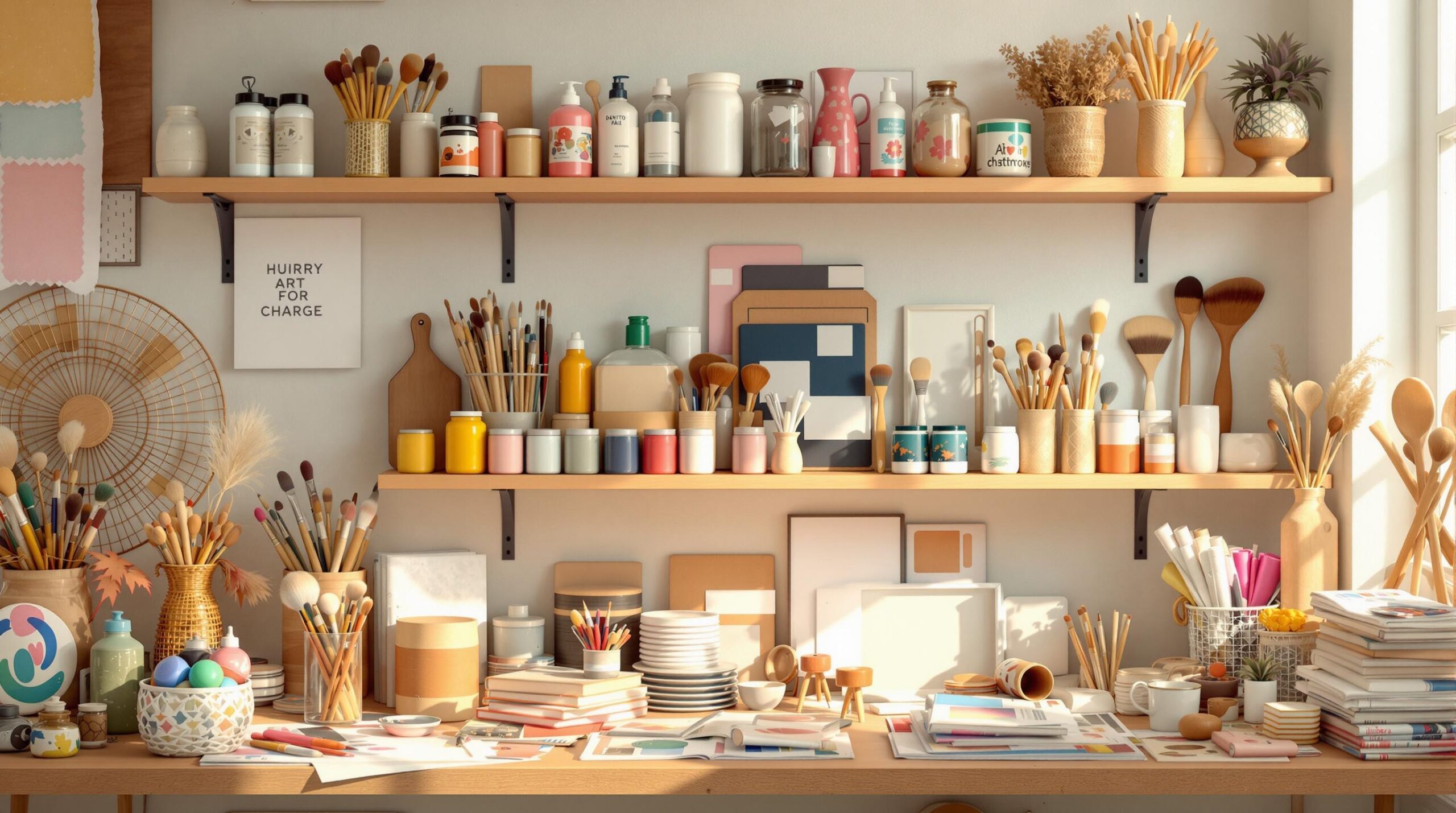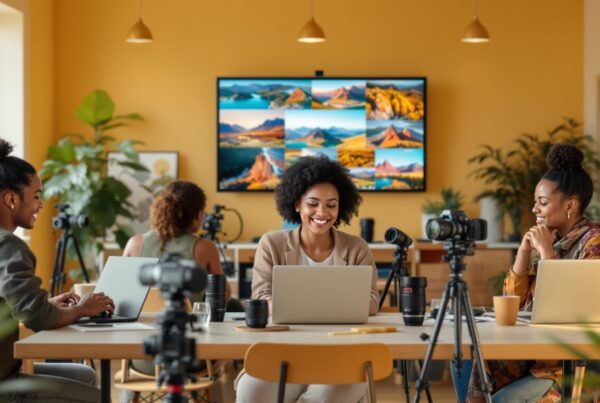In today’s visually-driven world, a powerful headshot can be the key that unlocks countless opportunities. As photographers, we’re not just capturing images; we’re crafting first impressions, shaping personal brands, and helping individuals put their best face forward in an increasingly competitive professional landscape. The art of headshot photography has evolved far beyond the realm of actors and models – it’s now an essential tool for professionals across all industries.
Think about it: in an age where LinkedIn profiles are often the first point of contact, where company websites showcase their teams, and where personal branding is more important than ever, a compelling headshot can make all the difference. It’s the digital handshake, the silent elevator pitch, the visual representation of one’s professional persona. And as photographers, we have the unique privilege and responsibility of creating these crucial first impressions.
But here’s the thing – headshot photography is a nuanced art form, blending technical skill with interpersonal finesse. It’s about understanding light, mastering composition, and harnessing the latest gear and techniques. But it’s also about connecting with people, making them feel comfortable in front of the camera, and bringing out their authentic selves in a single frame. This is why hiring a professional photographer is so important; their expertise ensures better angles, techniques, and overall image quality, making it a worthwhile investment for individuals and their brands. It’s a challenge that requires both left-brain precision and right-brain creativity.
As we dive into this guide, we’ll explore how to elevate our headshot photography game, whether you’re a seasoned portrait photographer looking to specialize or a professional from another niche seeking to expand your services. We’ll cover everything from the technical aspects of lighting and camera settings to the soft skills of client interaction and personal branding. We’ll discuss how to set up a headshot-specific workflow, how to market your services, and how to stand out in a competitive field.
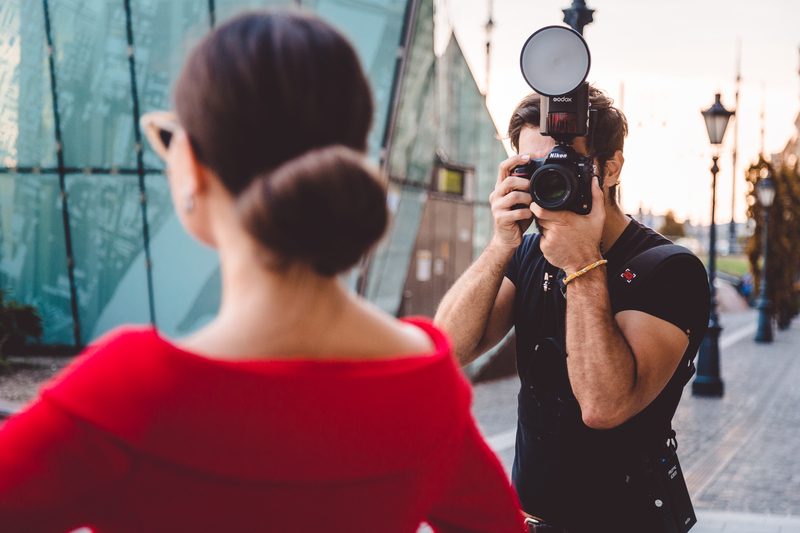
Headshot How to Take: Portrait photography
But this guide is more than just a how-to manual. It’s an invitation to join a thriving niche in the photography industry. The demand for high-quality headshots is growing across sectors – from corporate professionals to creatives, from entrepreneurs to academics. By mastering this craft, you’re not just adding another service to your repertoire; you’re positioning yourself at the intersection of photography and personal branding, opening doors to new clients and revenue streams.
Moreover, headshot photography offers a unique opportunity to make a tangible impact on people’s lives and careers. A great headshot can boost confidence, help land job interviews, attract clients, and create opportunities. As headshot photographers, we have the power to help people see themselves in their best light – literally and figuratively.
So, whether you’re looking to pivot your existing photography business, add headshots as a complementary service, or simply refine your skills in this area, you’re in the right place. This guide will equip you with the knowledge, techniques, and insights you need to excel in the world of headshot photography.
Let’s embark on this journey together, exploring the art and science of creating headshots that not only look great but also tell compelling stories and open doors for our clients. Welcome to the world of professional headshot photography – where every click of the shutter has the potential to change someone’s professional trajectory.
Understanding the Headshot Market
Before we delve into techniques, it’s crucial to understand the headshot market:
- Corporate professionals seeking to enhance their LinkedIn profiles
- Actors and models needing portfolio updates
- Entrepreneurs and small business owners building their brand
- Authors requiring book jacket photos
- Speakers and coaches for their marketing materials
Each of these segments has unique needs and expectations. Our job is to meet and exceed them.
Preparing for a Professional Headshot
Preparing for a professional headshot requires some planning and attention to detail. Here are some tips to help you get ready:
- Choose the Right Location: Opt for a setting with soft, natural light. Avoid direct sunlight as it can create harsh shadows and unflattering light. A location with even, diffused lighting will help highlight your features beautifully.
- Select a Simple Background: A neutral-colored background that complements your outfit and doesn’t distract from your face is ideal. This ensures that the focus remains on you.
- Dress Appropriately: Wear solid colors and avoid bold patterns or logos. Stick to classic, timeless clothing that fits well and makes you feel confident. Your outfit should enhance your appearance, not overshadow it.
- Hair and Makeup: Style your hair and makeup as you normally would. Avoid trying new hairstyles or makeup looks on the day of the shoot to ensure you look like yourself.
- Bring Multiple Outfits: Having a few different outfits to change into during the shoot gives you options and helps you find the perfect look. This variety can also provide different vibes for different uses of your headshots.
By following these tips, you’ll be well-prepared to present your best self in your professional headshot.
Essential Equipment for Professional Headshots
While we can create great headshots with minimal gear, having the right equipment can significantly enhance our efficiency and output quality:
- Camera: A full-frame DSLR or mirrorless camera for optimal image quality
- Camera lens: A clean 85mm f/1.4 or 70-200mm f/2.8 lens for flattering facial compression and sharp image quality
- Lighting: Strobe lights with modifiers (softboxes, beauty dishes) for consistent results
- Backdrop system: For versatility in studio settings
- Tethering setup: For instant feedback and client review
Investing in quality gear pays off in the long run, both in image quality and client perception.
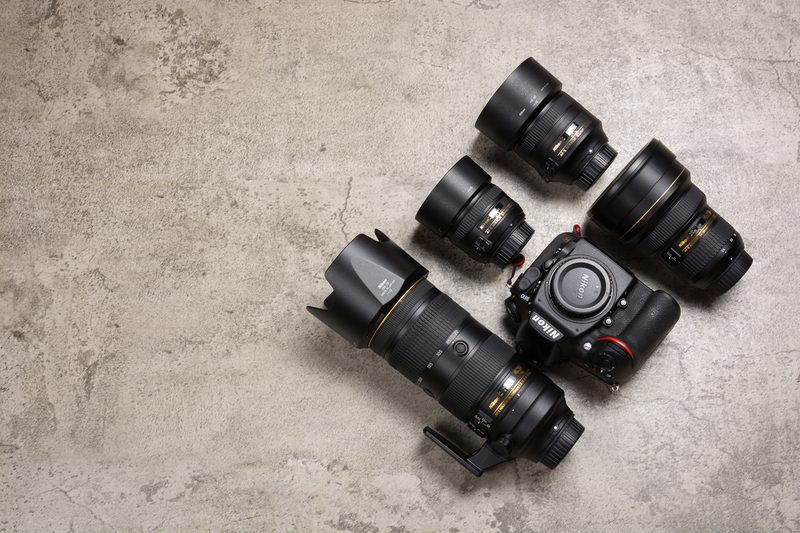
Headshot How to Take: Essential Equipment
Setting Up Your Headshot Studio Lighting
Creating a dedicated headshot space, whether permanent or mobile, is key to consistency:
- Backdrop options: Neutral colours (grey, white, black) are versatile
- Lighting setup: Main light, fill light, and hair light for a classic three-point lighting
- Tethering station: For immediate image review with clients
- Comfort amenities: Seating, mirrors, and refreshments for clients
For those who may not have access to professional lighting equipment, using the portrait mode on smartphones can enhance photo quality by blurring backgrounds and creating a professional look.
Remember, a comfortable client is a photogenic client.
Mastering Lighting for Headshots
Lighting is where we can truly differentiate our work:
- Understand the nuances of loop lighting, Rembrandt lighting, butterfly lighting, and the importance of using soft light for flattering headshots
- Master the use of reflectors and flags to shape light
- Experiment with different light modifiers to achieve various moods and styles
- Learn to balance ambient light with studio lighting for environmental headshots
Consistent, flattering lighting is our signature as professional headshot photographers.
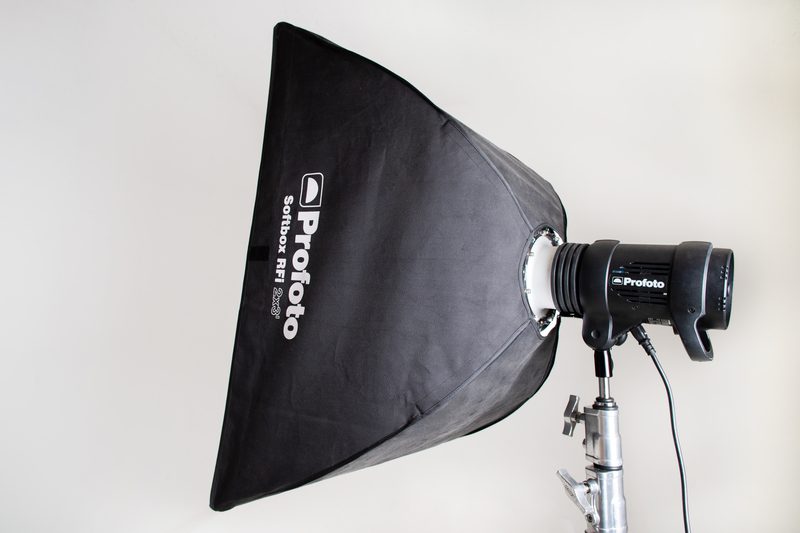
Headshot How to Take: Mastering Lighting for Headshots
Camera Settings and Techniques
Nailing the technical aspects ensures we can focus on creativity and client interaction:
- Aperture: Usually between f/5.6 and f/8 for optimal sharpness and depth of field
- Shutter speed: At least 1/125s to avoid motion blur
- ISO: Keep it low (100-400) for clean images
- Focus: Use single-point autofocus, always on the eyes
- Shooting mode: Manual for complete control
Consistency in settings allows us to concentrate on composition and client direction. When capturing a self portrait, apply the same camera settings to ensure sharpness and clarity, while experimenting with different backgrounds and lighting to enhance the visual expression.
Posing and Directing Clients
This is where our people skills shine:
- A professional photographer will start with basic poses and refine based on the client’s features and comfort level
- Use clear, simple directions (“Chin down slightly”, “Turn your shoulders towards the light”)
- Demonstrate poses yourself to make clients comfortable
- Encourage natural expressions through conversation and genuine interaction
Remember, our job is to make clients look and feel their best.
Capturing the Perfect Shot
Capturing the perfect shot requires a combination of technical skills and artistic vision. Here are some tips to help you achieve that:
- Use High-Quality Equipment: Whether you’re using a professional camera or a smartphone, ensure it’s set to the highest possible image quality. Adjust the white balance setting to ensure accurate skin tones.
- Experiment with Poses and Angles: Try different poses and angles to find the most flattering position. Sitting, standing, and leaning can all offer unique perspectives.
- Focus on Lighting: Soft, natural light is ideal for headshots. Avoid harsh shadows and unflattering light. If you’re indoors, position yourself near a window with diffused light.
- Eyes are Key: The eyes are the most important feature in a headshot. Make sure they are in focus and convey your personality. A good headshot photographer knows how to capture the essence of their subject through the eyes.
- Take Multiple Photos: Don’t be afraid to take many photos to capture the perfect shot. This will give you options and help you find the best expression.
By paying attention to these details, you can capture a headshot that truly represents you at your best.
Retouching for Natural, Polished Results
Post-processing can make or break a headshot:
- Develop a consistent editing style that enhances without over-processing
- Focus on skin smoothing, colour correction, and subtle contouring
- Pay attention to eyes and teeth for that extra polish
- Create presets for efficiency, but always fine-tune each image
Using photo editing apps like VSCO Cam, Afterlight, and Snapseed can greatly assist in retouching headshots, providing tools for achieving natural, polished results.
Our goal is to present our clients as their best selves, not create unrealistic representations.
Common Mistakes to Avoid
There are several common mistakes to avoid when taking a professional headshot. Here are a few to keep in mind:
- Using Low-Quality Equipment: Avoid using a low-quality camera or smartphone. This can result in a poor-quality image that doesn’t do you justice.
- Over-Editing: While some editing is necessary, over-editing can make you look unnatural and unrecognizable. Aim for a natural, polished look.
- Distracting Backgrounds: Avoid using a busy or distracting background. This can take attention away from your face and make the photo look unprofessional.
- Tense Expressions: Don’t forget to relax. A tense expression can make you look uncomfortable and unapproachable. Take a deep breath and try to enjoy the process.
- Poor Lighting: Avoid taking a headshot with a selfie stick or in a poorly lit location. This can result in a low-quality image that doesn’t capture your best features.
By steering clear of these common mistakes, you can ensure your headshot is professional and flattering.
Building Your Headshot Business
Now that we’ve honed our skills, let’s focus on the business side:
- Define your target market (corporate, creative, or a mix)
- Create packages that cater to different client needs and budgets
- Develop a strong online portfolio showcasing your best work
- Network with local businesses, theatres, and talent agencies
- Offer special promotions to build your initial client base
- Consider on-location services for corporate clients
Ensure you have sufficient storage space on your device to take all the photos needed during a session. This preparation helps avoid interruptions and ensures a smooth shooting process.
Remember, exceptional service leads to referrals – the lifeblood of a successful photography business.
Tips from Professional Photographers
Here are some tips from professional photographers to help you take a great headshot:
- Use a Tripod: Stabilize your camera with a tripod or photo mount to prevent camera shake and ensure sharp images.
- Experiment with Lighting: Soft, natural light is ideal, but you can also use studio lighting to create a more dramatic effect. Experiment with different setups to find what works best.
- Composition Matters: A good headshot photographer knows how to compose a shot to make the subject look their best. Pay attention to framing and background.
- Focus on the Eyes: The eyes are the window to the soul. Make sure they are in focus and convey the subject’s personality.
- Take Your Time: Don’t rush the shoot. Take multiple photos and experiment with different poses and angles to capture the perfect shot.
By incorporating these professional tips, you can elevate your headshot photography and produce stunning results.
I hope these sections meet your requirements! Let me know if you need any further assistance.
Staying Ahead of the Curve
The photography industry is ever-evolving. To stay competitive:
- Keep up with lighting and posing trends
- Invest in continuous education through workshops and online courses, just as a professional photographer would to maintain their expertise
- Experiment with new techniques and styles
- Stay updated on industry standards for different professions
Innovation keeps our work fresh and clients coming back.
Handling Challenging Situations
Every photographer faces hurdles. Here’s how to navigate common ones:
- Nervous clients: As a professional photographer, use conversation and music to create a relaxed atmosphere
- Difficult facial features: Master the art of posing and lighting to flatter every face
- Time constraints: Develop an efficient workflow without sacrificing quality
- Technical issues: Always have backup equipment and a problem-solving mindset
Our ability to handle challenges professionally sets us apart in the industry.
Conclusion: Elevating Your Headshot Photography
Mastering headshot photography is a journey of continuous improvement. By focusing on technical excellence, client interaction, and business acumen, we can create a thriving headshot photography business. Enlisting a professional photographer can significantly enhance the quality of headshots, ensuring better angles, techniques, and overall image quality. Remember, every headshot is an opportunity to create a lasting impression – for our clients and our brand.
As we continue to refine our craft, let’s strive to create headshots that not only meet our clients’ needs but exceed their expectations. Here’s to capturing the essence of each individual and helping them put their best face forward!
FAQs for the Aspiring Headshot Pro
Q: How do I transition my existing photography business to include headshots?
A: Start by offering headshots to your current clients as an additional service. Create a dedicated portfolio showcasing your best headshot work, even if it’s from practice sessions with friends or family. Network in business and acting communities, and consider offering introductory rates to build your portfolio. Attend local business events or join chambers of commerce to meet potential clients. Gradually build your reputation in this niche by delivering consistently high-quality work and encouraging client referrals. Hiring a professional photographer for your own headshots can also help you understand the process and quality expected, making it easier to market your services effectively.
Q: What’s the ideal length for a headshot session? A: Typically, 30-60 minutes for individual sessions. This allows time for the client to get comfortable, try different poses and expressions, and possibly outfit changes. For corporate clients, consider offering shorter, high-volume sessions, around 10-15 minutes per person. Always buffer some extra time between sessions for unexpected delays or particularly challenging shoots.
Q: How many final images should I deliver to a client?
A: For individual sessions, 3-5 retouched images are standard. This gives clients options without overwhelming them. For corporate sessions, 1-2 per person is usually sufficient. However, be clear about your deliverables in your contract, and consider offering additional images as an upsell option.
Q: Should I offer hair and makeup services?
A: While not necessary, partnering with a hair and makeup artist can elevate your services and final product. Consider offering it as an add-on service. This can increase your revenue and provide a more comprehensive experience for clients. If you do offer this service, make sure to work with reliable professionals and factor their fees into your pricing structure.
Q: How do I price my headshot services competitively?
A: Research your local market to understand the going rates. Consider your costs (time, equipment, studio rent, software subscriptions) and factor in your expertise. Don’t undersell your services – remember, you’re offering a professional product. Consider creating tiered packages to cater to different budgets and needs. For example, you might offer a basic package with fewer shots and a premium package with more options and retouching.
Q: What’s the best way to help clients choose their final images?
A: Use a tethered setup for immediate review during the shoot. This allows clients to see the images in real-time and provide feedback. After the shoot, you can use an online gallery for clients to make their final selections. Guide them based on their intended use of the headshots, and trust your expertise to recommend the most flattering shots. Remember, clients often appreciate your professional opinion on which images work best.
Q: How often should I update my headshot portfolio?
A: Aim to update your portfolio at least every 6 months, but ideally, you should be adding your best recent work continuously. This showcases your evolving style and skills, and ensures that potential clients see your most current work. Regular updates also help with SEO for your website.
Q: Is it worth investing in high-end retouching software?
A: Yes, if headshots become a significant part of your business. Advanced software like Capture One for tethering and colour grading, and frequency separation techniques in Photoshop can improve your efficiency and output quality. However, start with what you have and upgrade as your business grows and you identify specific needs.
Q: How do I handle clients who are unhappy with their headshots?
A: First, try to understand the specific issues they have with the images. Often, clients may not like how they look due to personal insecurities rather than issues with the photography. In these cases, gentle guidance and explanation of your professional choices can help. If there are legitimate issues with the photos, offer a reshoot. Having a clear revision policy in your contract can help manage expectations and protect your time.
Q: What’s the best way to market my headshot services?
A: Develop a multi-pronged approach:
- Optimize your website for local SEO, focusing on headshot-related keywords.
- Use social media to showcase your work and share behind-the-scenes content.
- Network with local businesses, theatres, modelling agencies, and real estate offices.
- Offer referral discounts to encourage word-of-mouth marketing.
- Consider targeted ads on LinkedIn or Facebook for corporate clients.
- Collaborate with local businesses for cross-promotion.
Q: How do I efficiently manage high-volume corporate headshot sessions?
A: Preparation is key:
- Scout the location beforehand to plan your setup.
- Create a streamlined workflow with pre-set lighting and camera settings.
- Use software like Photoshoot Manager or Studio Ninja to handle scheduling and client information.
- Bring an assistant to help with logistics and keep the shoot moving.
- Have a clear shot list and time allocation for each person.
- Use tethered shooting for immediate quality control and to keep the pace up.
Q: What’s the best way to stay updated with headshot trends and techniques?
A: Continuous learning is crucial:
- Follow leading headshot photographers on social media and study their work.
- Attend photography workshops and conferences focused on portraiture.
- Join online photography communities and forums to exchange ideas.
- Subscribe to photography magazines and blogs.
- Experiment with new techniques and equipment regularly.
- Consider getting mentored by an established headshot photographer.
Q: How do I handle difficult clients or those with unrealistic expectations?
A: Clear communication is essential:
- Set clear expectations from the start with a detailed contract and pre-shoot consultation.
- Educate clients on the headshot process and what can realistically be achieved.
- Be patient and professional, even in challenging situations.
- If a client is particularly difficult, don’t be afraid to politely decline future work with them.
- Have a clear policy for revisions and reshoots to manage expectations.
Q: What’s the best way to streamline my post-processing workflow for headshots?
A: Efficiency in post-processing is crucial for profitability:
- Develop a consistent editing style and create pre-sets in Lightroom or Capture One.
- Use batch processing for initial adjustments.
- For retouching, create action sets in Photoshop for common tasks.
- Consider outsourcing basic retouching if your volume is high.
- Use software like Photo Mechanic for faster culling and sorting.
- Implement a structured file naming and organization system.
Remember, transitioning into headshot photography is about combining our existing skills with new, specialized knowledge. With practice, patience, and persistence, we can become the go-to headshot photographers in our market. Let’s capture some amazing headshots!shot photographers in our market. Let’s capture some amazing headshots!


